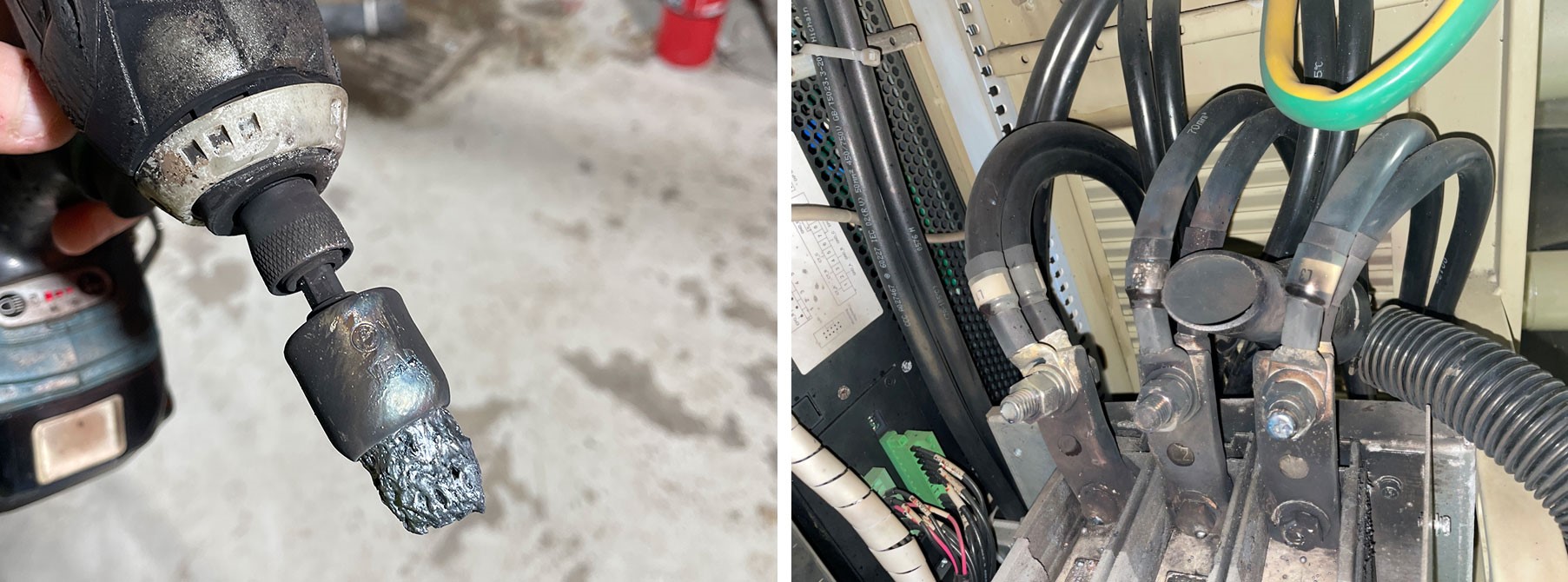Worker suffers burns after arc flash incident
Background
Last month, a refrigeration worker suffered arc flash burns while working on an electrical cubicle of a newly installed chiller, which had been imported into Australia.
At the time of the incident, two other workers were conducting commissioning work using the chiller’s programmable logic controller. The injured worker was asked to clean corrosion that had appeared on some of the cable lugs and terminals using a drill with a wire brush attachment.
NT WorkSafe’s initial enquiries indicate a few of the chiller’s electrical cubicles had been de-energised using each cubicles individual isolation switch, however the specific cubicle the injured worker went to clean was still energised.
Prior to doing the task, the worker did not test for live parts within the cubicle, but relied on the advice from co-workers that the cubicle had been de-energised.
The wire brush came into contact with live parts, causing an arc flash which injured the worker. The live parts were energised from a 1250 amp circuit breaker at 415 volts, which placed the worker at extreme risk of electrocution had he physically made contact.

Disclaimer
The above information is based on preliminary findings from NT WorkSafe’s initial enquiries. Enquiries are ongoing to determine the cause of the incident and the appropriate regulatory response.
Safety Information
NT WorkSafe reminds all refrigeration mechanics and electrical contractors of the dangers of working on, or near energised electrical parts. The most effective control measure is to de-energise the supply to the circuit or equipment and eliminate the risk of contact with electricity.
Don’t work live. Before starting a job, always follow the following process:
- Follow the Northern Territory’s Work health and safety consultation, cooperation and coordination Code of Practice, and regularly consult your workers on conducting risk assessments and following safe work procedures.
- When commissioning a new item of plant, check and complete all cleaning and maintenance work while the plant is de-energised and isolated. Do not perform maintenance work and commissioning work at the same time.
- Read the plant's operating manual and have your workers familiarise themselves with the plant's wiring diagram so they know how to isolate individual electrical cubicles.
- If repairing an item of plant, communicate with your client on the need to disconnect the power so you can safely work.
- If required, schedule a time when it is convenient to disconnect the power.
- Identify the circuit(s) or equipment that require isolation:
- Include circuits or equipment with exposed live parts in the vicinity of your work area.
- De-energise supply and isolate the circuit(s) or equipment.
- Check that the circuit(s) or equipment does not have an alternative or auxiliary power source, or a backup source such as a generator or photovoltaic systems.
- Lock-out and tag-out to prevent accidental re-energisation.
- Always test before you touch.
- Isolation should be completed in line with Section 3 of Australian Standards AS/NZS 4836:2023 - Safe working on or near low-voltage and extra-low voltage electrical installations and equipment (the Standard).
- Appendix B of the Standard provides detailed guidelines on managing the risks of arc flashes.
Further Information
For further information, please refer to the following.
Safety Alerts
- Power off switchboards before entering ceiling space
- Dangers of working on or near energised (live) electrical equipment safety alert (WorkSafe NSW)